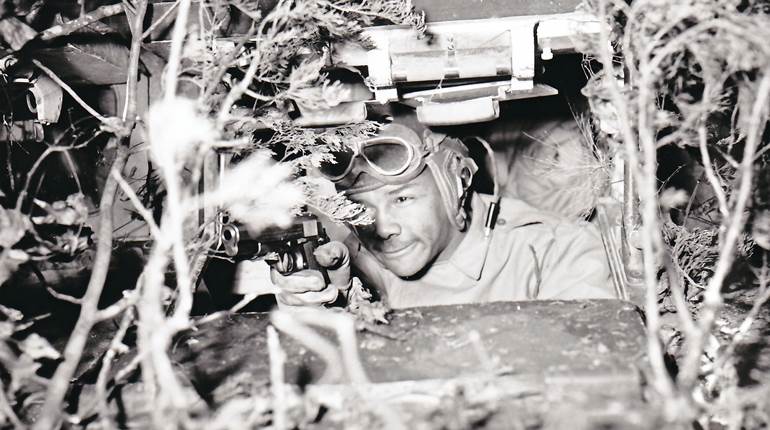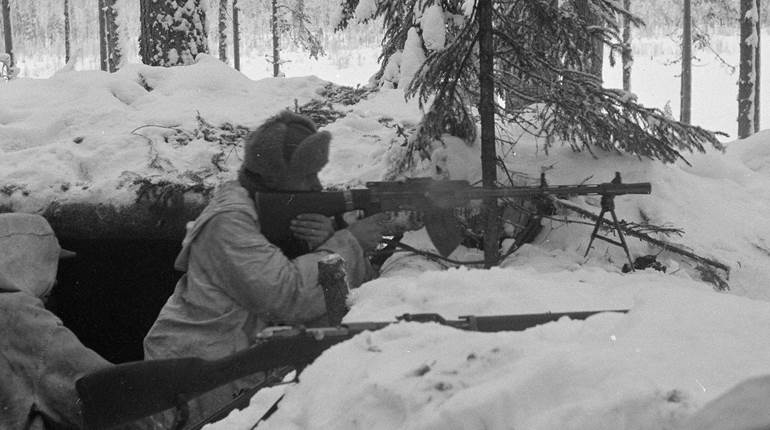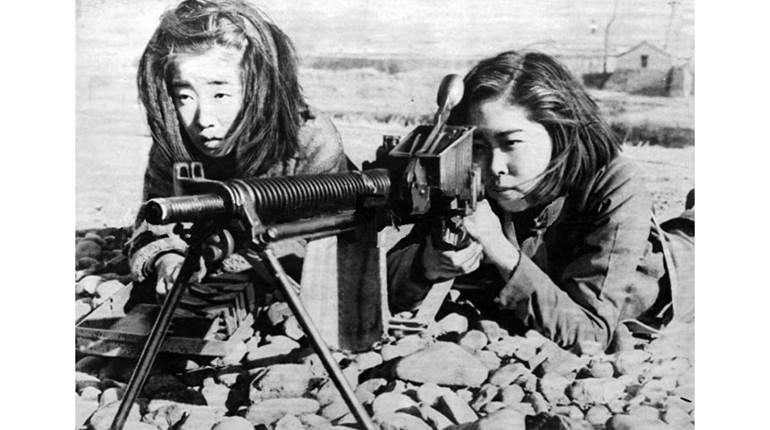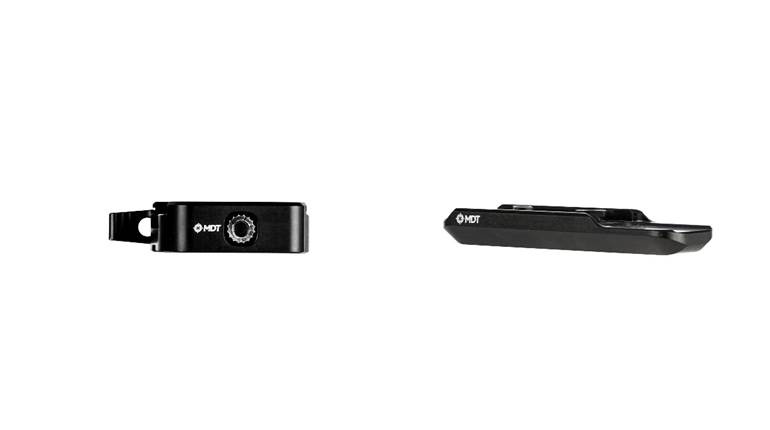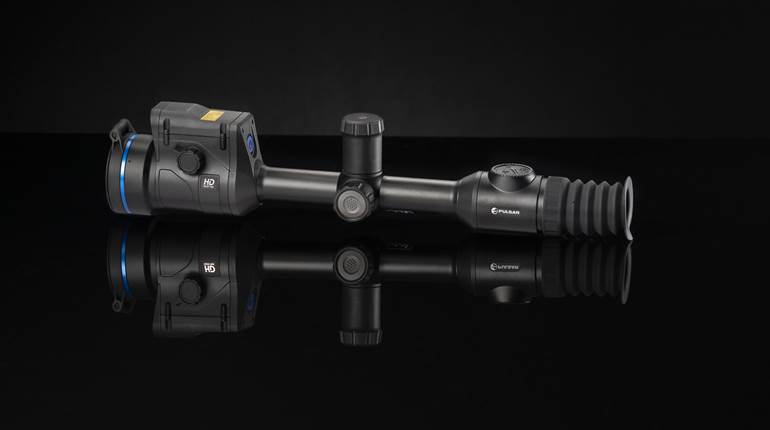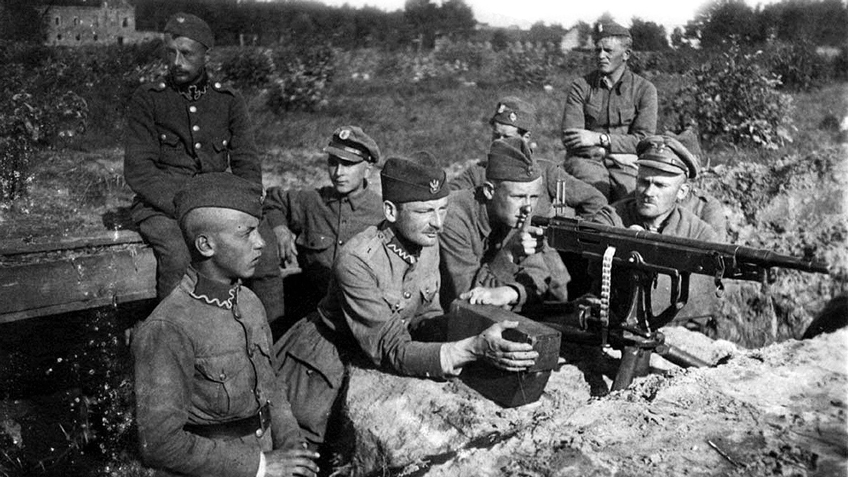
Top image: Polish troops in the defense of Warsaw, summer 1920. The machine gun is a Colt-Browning Model 1895, in this case chambered in 7.62x54 mm R.
As Allied nations celebrated the peace brought on by the Armistice of November 1918, a new Allied nation was born. Poland became a nation again, and its borders were quickly redrawn on the map of Europe. Led by their stalwart Head-of-State Jozef Pilsudski, Polish forces quickly reclaimed much of their traditional territories to the East, particularly at Vilna, and along the disputed border with Ukraine. As early as February 1919, Pilsudski had Polish troops on the offensive, pressing eastward against communist forces and steadily liberating territory. In April 1920, Pilsudski joined with Ukrainian anti-communists and pushed the Bolsheviks out of the western Ukraine and liberated Kiev.
Cossack Cavalry: Feared and loathed throughout Eastern Europe.
The Red Horde Turns Westward
Farther east, the brutal Russian Civil War was coming to an end. Instead of pausing to lick their wounds and secure their home front, the Bolsheviks opted to press their advantage. The conquest of Western Europe was their goal, and Poland was the first significant barrier that stood in their way. Soon, more than 15,000 saber-carrying horsemen of the “Konarmiya,” a massive communist force led by Semyon Budyonny, was assembling at the Polish border. On May 26, 1920, the Red horsemen poured into Poland, hacking, slashing and burning their way through the countryside. Foreign observers to the fighting were stunned. No one had suspected that a cavalry army could move so fast and do so much damage on a modern battlefield.
These are communist militiamen in Eastern Poland, and the man at right carries a French Model 1916 Berthier rifle.
Soviet Tachanka: Mobile firepower for Bolshevik cavalry, the “Tachanka” used various wagons or carts pulled by a four-horse team to keep their Maxim guns on the move.
A Logistical Nightmare for Poland
After four years of the Great War, all of Europe was overflowing with a mish-mash of military equipment, particularly small arms. The newly formed Polish Republic inherited large amounts of rifles from Russia, Germany and the former Austro-Hungarian Empire. However, spare parts and trained armorers were in short supply. A wide range of ammunition added an unwanted level of complexity. Without a functioning armaments industry of their own, Polish military leaders strove to consolidate rifles issued to their troops into the major types. This meant that Polish infantry units were normally equipped with Mauser rifles or the commonly found Mosin-Nagant Model 1891 rifle. Period photos show French Lebel and Berthier rifles in the hands of Polish second line and militia units.
Poland was forced to use a wide variety of small arms. Here Polish troops are seen in action with a German MG08 (7.92x57 mm Mauser) machine gun, and French Berthier Model 1916 carbines (8x50 mm Lebel).
Machine guns were always in need. Polish forces were primarily armed with the German MG08 (7.92x57 mm), the Russian Maxim PM M1910 (7.62×54 mmR) and occasionally the Austro-Hungarian Schwarzlose M.7 (7.92x57 mm). All were fine designs, but the issue of spare parts and multiple ammunition types was intensified with automatic arms, and this contributed to limit Polish infantry firepower. Fortunately for the Poles, courage was never in question.
The ubiquitous Maxim M1910 machine gun on a Sokolov wheeled mount with an armored shield.
Polish men, women and teenage boys (some as young as 14) all served in combat. Everyone was needed to hold onto the freedom so recently achieved. Across the lines, the Bolshevik horde did not distinguish between young and old, military or civilian. Atrocities were common. Budyonny’s Cossacks, running wild behind Polish lines, captured and burned a hospital in Berdychiv, along with the 600 patients and Red Cross nuns inside it. Most Western Europeans had no idea of the desperate fight to the death that was headed in their direction.
During the 1920 Soviet invasion, many Polish women served in combat roles. Here they pose with a Maxim PM M1910 machine gun (7.62x54 mm R) on a wheeled “Sokolov” mount. Many Maxim guns were captured from Bolshevik forces and used by the Poles. Courtesy Nigel Thomas PhD.
To stop the Bolshevik onslaught, even Polish children were in uniform. This 15-year-old served along with two battalions of teenage soldiers under Gen. Zielinkski. He carries a Mannlicher Model1895 Carbine (8x50 mm R).
The Miracle on the Vistula
By Aug. 10, 1920, the weight of the Red armies was pressing on Warsaw in the center and from the north. In a daring move, the Poles stripped troops facing Budyonny’s advancing cavalry in the south and swung their forces north. When ordered to ordered to attack Warsaw from the south, Budyonny instead decided to send his cavalry army to capture to capture Lwów. Infighting and political intrigue plagued the Soviet command, and even Stalin (the chief political commissar in the south) meddled and contributed to the confusion.
Bolshevik riflemen with M1891 Mosin Nagant rifles.
While Soviet troops broke through on the northern front, crossing the Vistula to encircle Warsaw and attack it from the west, few Bolsheviks could have imagined they were heading into a trap. As their northern forces ranged farther and farther west, outstretching their lines of communication and supplies, the Bolshevik forces in the center attempted to force open the front door to Warsaw. The Poles held the line and the Reds exhausted themselves in the frontal attacks.
By Aug. 14, the Poles counterattacked. The Soviet forces in the center fell into chaos and retreated rapidly. The Soviet troops in the north and west were quickly cut off. What looked like a certain Soviet victory quickly turned into a rout. Polish forces returned to the southern front and blunted the Red advances there. On Aug. 31, Polish cavalry got a large measure of revenge against Budyonny’'s Red cavalry army as the Russian horsemen attempted to help their comrades retreating from Warsaw. At the Battle of Komarów, the largest cavalry engagement since 1813, Polish lancers bloodied the hated Cossacks and ran them out of Poland. Bolshevik losses were heavy.
Polish troops in Warsaw, 1920.
Polish forces regained almost all of the previously disputed territories and the diplomats went back to work. A ceasefire was signed on Oct. 12, 1920. The peace held until Sept. 17, 1939, when the Soviets again invaded Poland from the east, while Nazi Germany invaded from the west.
The Red Scare Met with International Indifference
It is important to remember that Poland had few allies during this conflict. France was the only major nation committed to fighting Bolshevism, and thus the French became Poland’s greatest resource for men and material. The French facilitated the transfer of the “Blue Army,” about six divisions worth of ethnic Poles and foreign volunteers to join the fight against international communism. A young French officer named Charles de Gaulle was part of this force, along with 21 American pilots of the Kościuszko Squadron. The Hungarians attempted to send a force of cavalry in support, but this was blocked at the Czech border. Later, Hungary sent a large quantity of Mauser rifles to aid the Polish cause.
Poland’s neighbors Germany and Lithuania were embroiled in communist uprisings and were often openly hostile to Poland during the conflict. Sadly, so too was Great Britain, and Britain's Prime Minister, David Lloyd George, sympathized with the Soviets and authorized arms sales to the Bolsheviks during the war.
Polish militiamen (armed with M1891 Mosin-Nagant rifles) march to the front to defend their families and homes in the summer of 1920.
Today we can only speculate with “what-if” scenarios about a communist take-over of Poland in the late summer of 1920. The Red Army was primed to overrun the entire nation if Warsaw fell. What was left in central Europe to stop them if they had won? Germany was in chaos, with communists and nationalists fighting in the streets. It is not difficult to imagine the Red Army at the French border by the beginning of 1921, facing a French Army bled out by four years of the Great War. If France had fallen, all of continental Europe would have been under Soviet-communist domination soon after. But the Red nightmare did not become reality. We can thank Poland for that.












